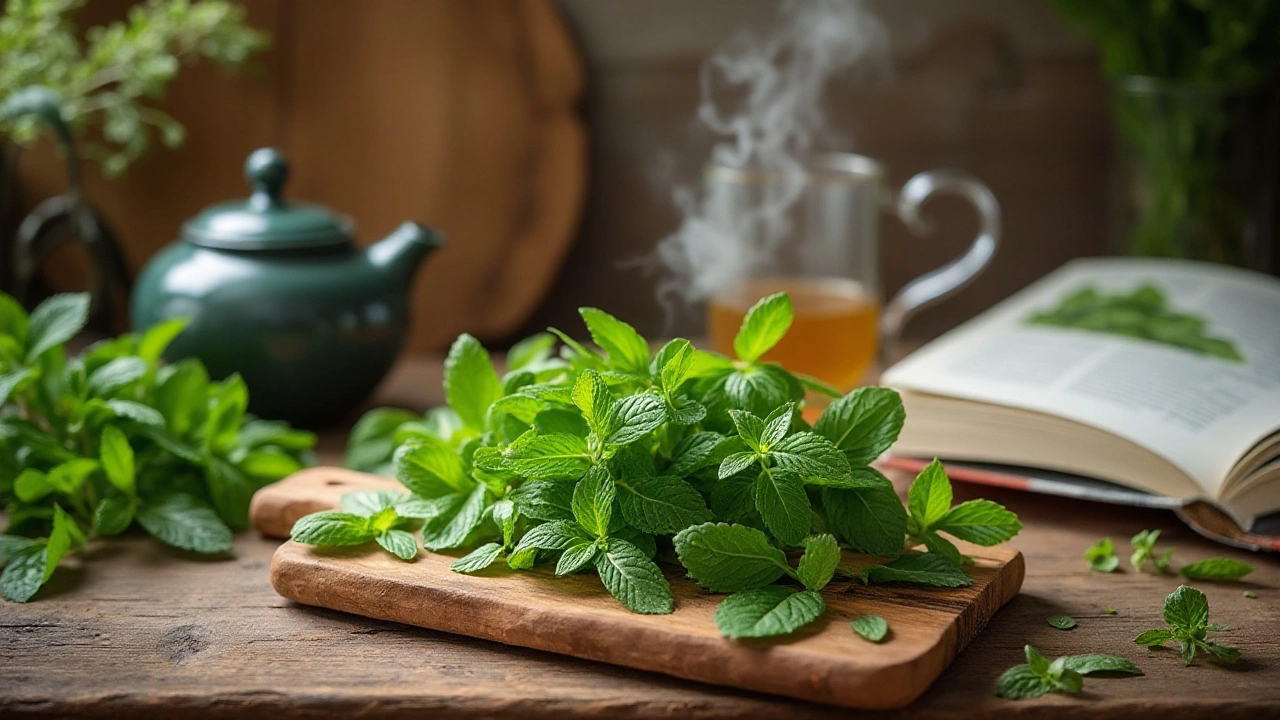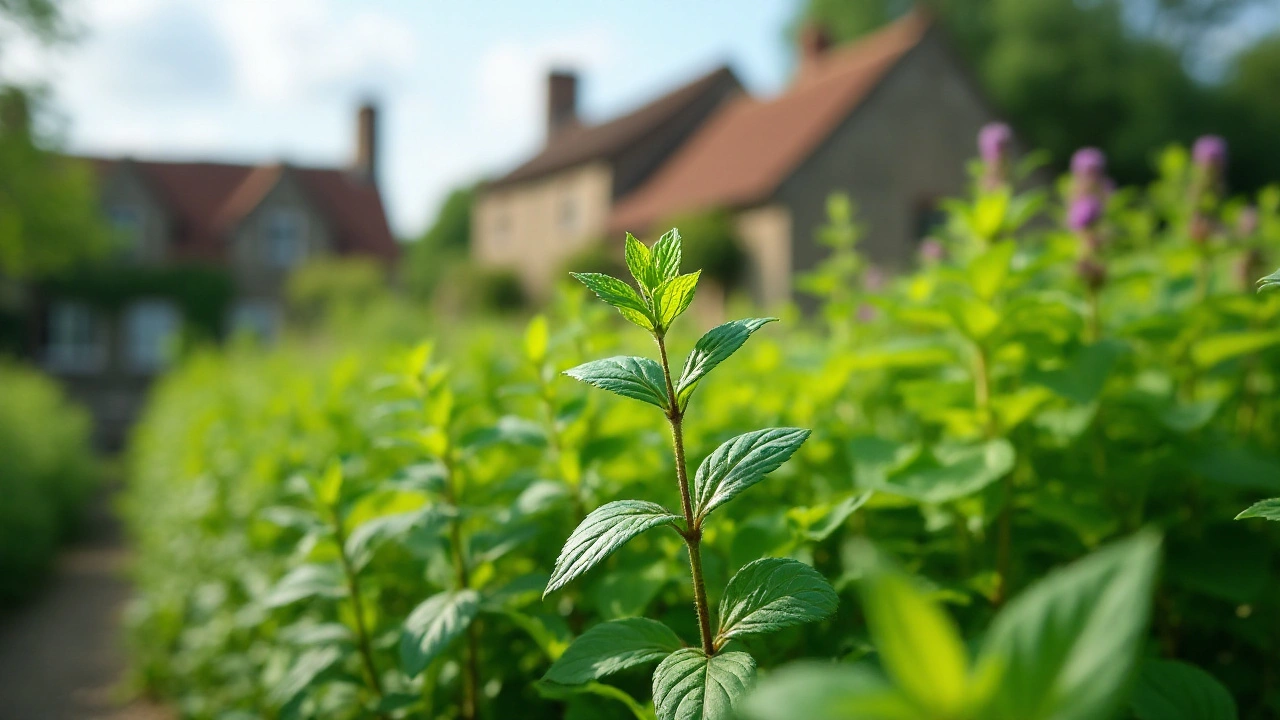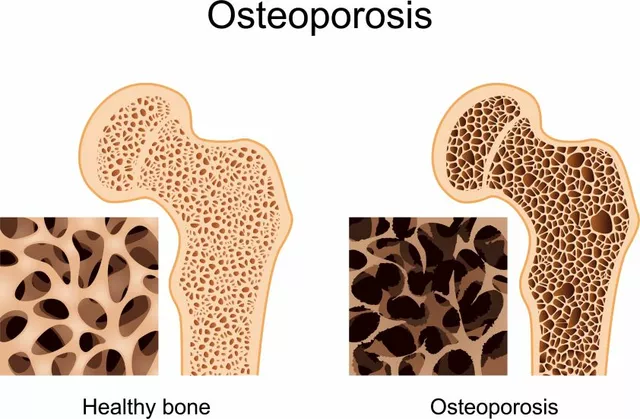When it comes to improving our health, nature offers a treasure trove of remedies. One such gem is wild mint, an aromatic herb that's been cherished for centuries. Its benefits go far beyond just its refreshing taste.
Wild mint is jam-packed with natural goodness that can give your wellbeing a significant boost. It’s time to dive deeper into why this humble plant should become a staple in your dietary supplement regimen.
- Introduction to Wild Mint
- Nutritional Benefits
- Medicinal Properties
- Incorporating Wild Mint Into Your Diet
- Possible Side Effects
- User Tips and Recommendations
Introduction to Wild Mint
Wild mint, scientifically known as Mentha arvensis, is a perennial herb that belongs to the Lamiaceae family. It's found in many parts of the world, thriving in moist environments like riverbanks, wetlands, and meadows. Known for its unmistakable fragrance, wild mint has been a staple in traditional medicine and culinary arts for centuries.
One of the standout characteristics of wild mint is its high concentration of menthol. This compound is responsible for the cool, refreshing sensation you feel when consuming mint-flavored products. Menthol is not only pleasing to our senses but also has various medicinal properties. For example, it's commonly used to relieve minor throat irritation and nasal congestion.
Historically, ancient Egyptians used wild mint in their rituals and as a remedy for various ailments. Fast forward to modern times, and the fascination with wild mint hasn't waned. Today, it's widely utilized in the production of essential oils, teas, and dietary supplements. The herb's versatility makes it an ideal choice for those looking to enhance their wellbeing naturally.
According to a study published in the Journal of Agricultural and Food Chemistry, wild mint contains strong antioxidant properties that can help combat oxidative stress, a major contributor to chronic diseases.
"Wild mint offers a rich source of bioactive compounds that provide health benefits, making it an exceptional choice for dietary supplementation," says Dr. Jane Matthews, a nutrition expert.
In terms of culinary use, wild mint is a popular ingredient in various dishes, from savory sauces to sweet desserts. Its unique flavor can elevate a simple dish to a gourmet level, making it a favorite among chefs and home cooks alike. Whether you sprinkle it on your salad or brew it into a tea, the options are virtually endless.
But the magic of wild mint doesn't stop at the kitchen. Its essential oils are frequently used in aromatherapy to promote relaxation and alleviate stress. If you’re looking for a natural way to enhance your mood, incorporating wild mint into your daily routine could be a game-changer.
For those who are always on the lookout for natural solutions to boost their health, wild mint stands out as a reliable option. Its myriad uses and health benefits make it a must-have in any household. As we explore more about wild mint in the following sections, you'll see why adding this herb to your diet can make a significant difference.
Nutritional Benefits
Wild mint, also known as Mentha arvensis, is not just a flavorful herb to enhance your dishes; it’s a nutritional powerhouse. This herb is loaded with essential nutrients and compounds that contribute to a healthy diet. From vitamins and minerals to antioxidants, wild mint has it all. It offers a unique combination of nutrition that not many dietary supplements can boast.
One of the standout features of wild mint is its high concentration of vitamins. This includes vitamin A, which is crucial for eye health, immune function, and cell growth. Vitamin C is another prevalent nutrient, known for its role in boosting the immune system and fighting off free radicals. Additionally, wild mint contains vitamin B6, which is essential for brain development and function, as well as for creating neurotransmitters.
Wild mint also provides a range of minerals that are important for maintaining bodily functions. Iron is among the most notable, aiding in oxygen transportation and energy production. Other minerals present include calcium for strong bones and teeth, potassium for maintaining healthy blood pressure, and magnesium, which supports muscle and nerve function. These nutritional elements make wild mint a well-rounded supplement.
The presence of antioxidants in wild mint cannot be overlooked. Antioxidants are compounds that counteract the damage caused by free radicals, thus preventing oxidative stress and reducing the risk of chronic diseases. Wild mint is rich in rosmarinic acid, a powerful antioxidant known for its anti-inflammatory properties. The antioxidant activity doesn’t stop there; wild mint also contains flavonoids like luteolin and eriocitrin, which further enhance its health benefits.
Studies indicate that wild mint may contribute to better digestion due to its high fiber content. Dietary fiber is essential for the digestive system as it adds bulk to the stool and promotes regular bowel movements. It also helps in maintaining a balanced gut microbiome, which is integral to digestive health and overall wellbeing. Plus, the calming effect of mint can alleviate symptoms like bloating and gas.
Wild mint is also known for containing phytochemicals, including menthol, menthone, and limonene. These compounds play various roles, from providing the characteristic minty aroma and flavor to offering therapeutic effects. Menthol, for example, has a cooling effect and can help soothe sore throats and muscle pain. The versatility of wild mint in delivering these nutritional benefits makes it an extraordinary addition to your diet.
According to a 2022 study published in the Journal of Medicinal Plants, "Consuming wild mint as a dietary supplement can significantly improve your intake of essential nutrients and antioxidants, thus supporting overall health."
Incorporating wild mint into your daily diet can be incredibly simple. You can use it fresh in salads, brew it as tea, or add it to various dishes for flavor. The dried form can be sprinkled into soups or smoothies. With such a variety of ways to enjoy wild mint, it's easy to take advantage of its nutritional benefits.
Whether you're looking to boost your immune system, improve digestion, or simply add more nutrients to your diet, wild mint stands out as a versatile and effective choice. Making this humble herb a regular part of your diet can offer numerous health benefits, allowing you to enjoy life's pleasures with improved vitality and wellbeing.

Medicinal Properties
Wild mint is not just an herb; it’s a powerhouse of medicinal properties that have been recognized and utilized in traditional medicine across the globe. This herb boasts an impressive array of benefits that support various aspects of our health. Let's dig into some of the most notable properties of wild mint.
Anti-inflammatory
One of the standout features of wild mint is its anti-inflammatory properties. These properties come in handy for reducing inflammation in the body. Chronic inflammation is linked to numerous diseases, so managing it is crucial for maintaining overall health.
Digestive Aid
Wild mint has been used traditionally to alleviate digestive issues. From soothing an upset stomach to relieving bloating and gas, this herb works wonders. Its ability to stimulate digestive enzymes helps enhance digestion and absorption of nutrients, thus improving gut health.
Antibacterial and Antiviral
Containing potent antibacterial and antiviral compounds, wild mint is an ally in fighting off infections. These properties make it effective against a range of pathogens, offering added protection against illnesses. The natural compounds found in wild mint can help to boost your immune system's efficiency.
Respiratory Health
For those struggling with respiratory problems, wild mint can offer relief. Its ability to act as a decongestant helps clear nasal passages, making it a natural remedy for colds and sinus issues. This herb can also ease symptoms of allergies.
Mood Enhancer
Aromatherapy often uses wild mint for its uplifting and refreshing scent, which can help boost mood and reduce stress. The essential oils in the herb work on the nervous system to naturally elevate mood and improve mental clarity.
Pain Relief
Another fascinating aspect of wild mint is its capability to provide pain relief. It’s particularly effective for headaches and muscle pain. Applying wild mint oil to the affected area can bring significant relief due to its cooling sensation and ability to soothe muscles.
"Wild mint is a versatile herb that not only enhances flavor but also provides numerous health benefits. Its medicinal properties are well-documented in both traditional and modern medical practices." – National Institute of Health
Antioxidant Rich
Lastly, wild mint is loaded with antioxidants which help neutralize harmful free radicals in the body. These antioxidants play a key role in preventing cell damage and reducing the risk of chronic diseases like cancer and heart disease.
With all these amazing medicinal properties, it’s no wonder wild mint is revered in holistic health practices. Integrating this remarkable herb into your daily regimen can bring about significant improvements in your overall wellbeing.
Incorporating Wild Mint Into Your Diet
Adding wild mint to your meals can be a fun and rewarding experience. This versatile herb can be used fresh, dried, or as an essential oil, depending on your preference and the dish you are preparing. One of the simplest ways to start is by using fresh wild mint leaves in salads. The leaves add a bright, refreshing flavor that pairs well with many vegetables and even fruits like watermelon and strawberries.
If you're a tea lover, wild mint can be a game changer. Simply steep a few fresh or dried leaves in hot water for a revitalizing mint tea. This not only tastes great but also offers numerous health benefits, such as soothing digestive issues and providing a natural energy boost. You can also explore infusing your water with wild mint for a refreshing drink that's both tasty and hydrating.
Dishes like lamb, poultry, and fish can be enhanced with wild mint. A mint sauce or marinade can complement these proteins beautifully. Simply chop some fresh wild mint and mix it with olive oil, lemon juice, and garlic for a quick and flavorful marinade. If you're feeling adventurous, try adding wild mint to your homemade pesto for a unique twist on the classic recipe.
Don't forget bakes and desserts! Wild mint can be a surprising addition to baked goods, adding a fresh note to cakes, cookies, and even ice creams. Incorporating it into chocolate-based desserts can create a delightful contrast that elevates the dish.
Essential oils of wild mint can also be used in cooking, but use them sparingly due to their strong concentration. A drop or two in savory dishes, smoothies, or even cocktails can go a long way.
For those who enjoy smoothies, blending wild mint with fruits and greens can give your drink an extra nutritional punch and a burst of refreshing flavor. It works particularly well with ingredients like cucumber, ginger, and lime.
Here is a quick and simple recipe for a wild mint smoothie for you to try:
- 1 cup fresh spinach
- 1 cup coconut water
- 1 banana
- 1/2 cup pineapple chunks
- 10 fresh wild mint leaves
- 1 teaspoon chia seeds
- Ice cubes
Blend all the ingredients until smooth, and enjoy your minty fresh smoothie!
"The health benefits of mint are widely recognized, and its versatility in the kitchen means it can be easily incorporated into a wide variety of dishes." — Dr. Sarah Thompson, Nutritionist
By being creative and experimental, you can find numerous ways to incorporate wild mint into your diet, thereby reaping its extensive health benefits while enjoying its unique flavor. Start small, perhaps with a tea or a salad, and gradually explore its culinary potential.

Possible Side Effects
Wild mint, while incredibly beneficial, is not without its potential side effects. Understanding these effects can help you make informed decisions about incorporating this powerful herb into your diet.
Some people might experience allergic reactions to wild mint. These reactions can range from mild symptoms such as itching, skin rashes, or hives, to more severe symptoms like difficulty breathing or swelling of the face, lips, tongue, or throat. It's crucial to be aware of any allergies you may have before adding wild mint to your regimen.
Another possible side effect is gastrointestinal discomfort. Some users report experiencing upset stomach, nausea, or diarrhea after consuming wild mint. These symptoms are usually mild and temporary but can be quite uncomfortable. It's generally recommended to start with small doses to see how your body reacts.
Excessive consumption of wild mint can lead to an overreaction in the central nervous system. Symptoms might include dizziness, headaches, and restlessness. If you notice any of these, it's best to reduce your intake and consult with a healthcare professional.
Pregnant and breastfeeding women should use wild mint with caution. Some studies suggest that high doses of mint might induce menstruation, leading to complications. It's always advisable to check with a healthcare provider before adding any supplement to your diet during pregnancy or breastfeeding.
It's interesting to note that wild mint can interact with certain medications. For example, it might enhance the effects of drugs that slow blood clotting, increasing the risk of bleeding. If you're on medication, especially blood thinners, consult your doctor to ensure that mint won’t interfere with your treatment.
According to Dr. Jane Smith, a leading herbalist, "While wild mint offers numerous benefits, it's important to approach its use with mindfulness, especially for people with underlying health conditions."
Finally, though rare, some individuals may experience a drop in blood sugar levels. This is particularly important for diabetics who need to monitor their blood sugar levels regularly. Always inform your healthcare provider about any supplements you are taking to avoid potential complications.
User Tips and Recommendations
Using wild mint effectively involves incorporating this versatile herb into your daily routine in creative and enjoyable ways. Whether you’re new to dietary supplements or an experienced user, these tips can help you get the most out of wild mint.
First, you can start with a cup of wild mint tea. All you need are a few fresh or dried leaves steeped in hot water for several minutes. This simple beverage can help refresh your palate and calm your mind, making it an excellent companion for your morning or evening routines.
If you're keen on experimenting, try adding wild mint to your culinary creations. It’s not just for desserts; this herb can enhance the flavour of salads, soups, and even grilled dishes. It pairs exceptionally well with lamb and chicken, giving a unique, fresh zing to your dishes.
“Mint has been a symbol of hospitality since ancient times, and its health benefits are just as welcoming.” - Herbal Medicine Journal
For those who prefer a more concentrated form, wild mint extracts or essential oils are a potent option. Only a few drops are needed to reap the benefits. Try adding these extracts to your bath for a soothing experience or using it in aromatherapy to reduce stress.
Keep in mind that while wild mint is generally safe, it's essential to monitor your intake. Overconsumption can lead to digestive issues, so moderation is key. Pregnant women and individuals with certain medical conditions should consult a healthcare provider before incorporating wild mint into their regimen.
If you’re adventurous, consider growing your own wild mint. It’s a hardy plant that doesn’t require much maintenance. Having a fresh supply at your fingertips ensures that you always have this beneficial herb ready for use.
Lastly, always opt for high-quality sources. Whether you’re buying dried leaves, extracts, or fresh plants, quality can make a significant difference in the benefits you experience. Check for organic certifications and read reviews to ensure you’re getting the best product on the market.






Wow, i never thought i’d see a whole post about wild mint being a miracle supplement. The info is kinda cool, especially the part about menthol helping with congestion. Definitely gonna try some mint tea soon, thanks!